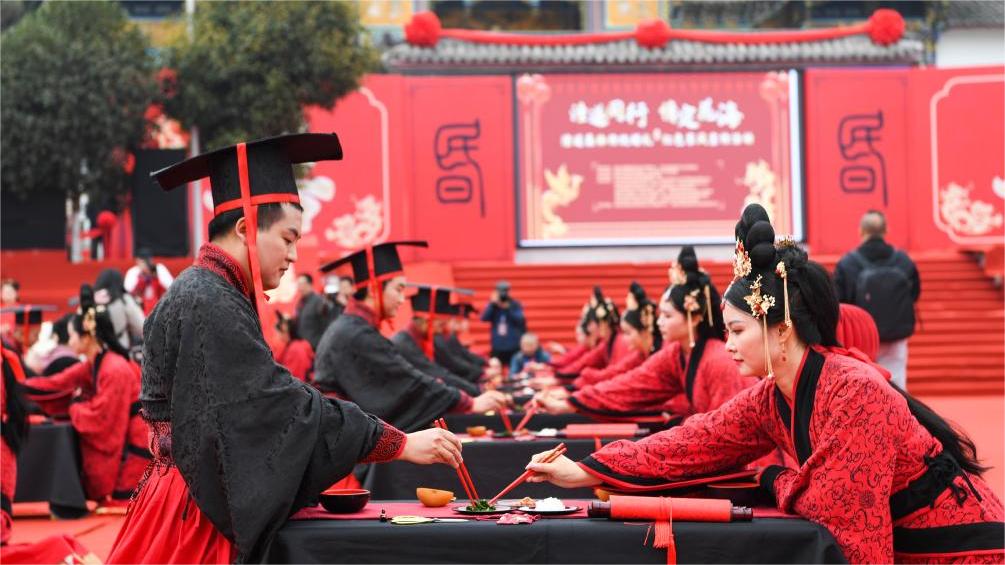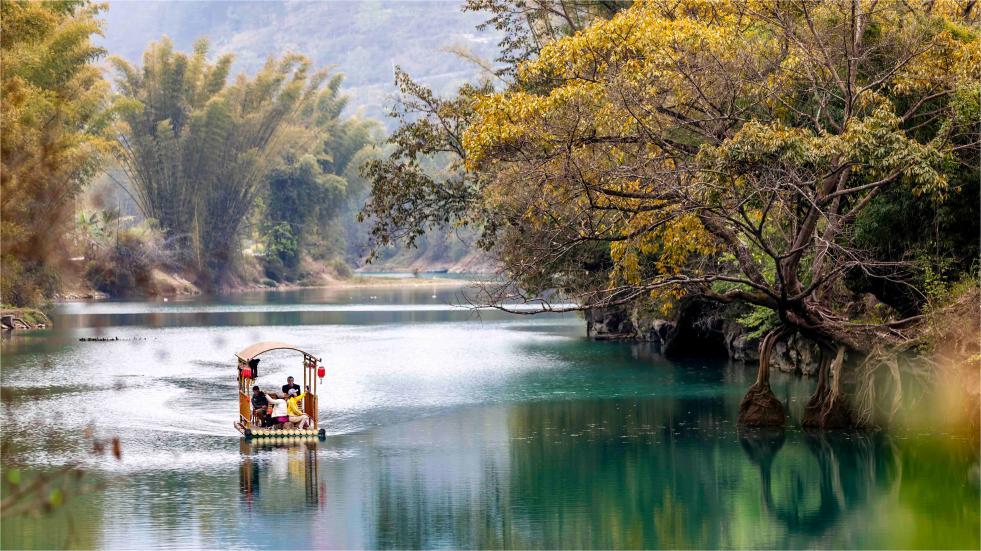Chinese archaeologists move to restore quake-ravaged heritage site
XINING, March 14 (Xinhua) -- Chinese archaeologists have been making great efforts to restore and repair damaged artifacts in a renowned site of prehistoric ruins after it was ravaged by a powerful earthquake.
On Dec. 18, 2023, a 6.2-magnitude earthquake struck Jishishan County, northwest China's Gansu Province, leaving more than 150 people dead in Gansu and neighboring Qinghai Province.
The quake caused sinking foundations, cracked walls, and collapsing ceilings in the museum of the Lajia archaeological site, located in the eastern part of Qinghai, on the upper reaches of the Yellow River. Sixty-eight pottery artifacts were damaged to varying extents.
As the quake struck, curator Wu Xiulan and her team rushed to the museum to assess the situation despite the looming threat of aftershocks before alerting the authorities about the damage.
A unique testament to ancient civilizations, Lajia ruins were formed by natural calamities such as earthquakes, mudslides, and floods dating back 4,000 years. Archaeologists said Lajia is the only prehistoric disaster site in China, and it was dubbed the Oriental Pompeii after the ancient Roman city was destroyed by volcanic eruptions.
Unearthed since the 1980s, the site has yielded extraordinary artifacts, including a jade knife and the world's oldest noodles. Archaeologists have also discovered settlements of the Qijia culture, high-level burials, moats, small squares, altars, and other important relics here.
After the quake hit, the provincial culture and tourism department of Qinghai swiftly assembled a specialized task force to inspect the extent of the devastation at the museum and take urgent measures to protect the imperiled cultural treasures.
The National Cultural Heritage Administration has allocated 300,000 yuan (about 41,718 U.S. dollars) in emergency funding to Qinghai and coordinated experts from other archaeological organizations to conduct on-site evaluations and formulate meticulous protection and restoration plans.
"Specific restoration plans are made for each damaged item," said Gao Zhiwei, an expert at the Qinghai Provincial Institute of Cultural Relics and Archaeology, adding that a file detailing the protection process will be established after each restoration.
The degree of damage to the pottery artifacts varies. Some were only slightly cracked or chipped, while others were severely damaged, broken into more than 70 or 80 pieces, with some pieces as large as palms and others as small as fingertips. "Repairing severely damaged artifacts is difficult because it involves piecing together all these fragments," Gao said.
In addition to the expertise and skills involved in the restoration, Li Feng, director of the Cultural Relics Protection Center of Qinghai Museum, underscored the process's cultural significance.
"Each fragment carries the weight of time. In the process of restoration, it feels as if we are having a cross-temporal dialogue with the artisans who made these pottery pieces thousands of years ago," Li said. "Through restoration, we can truly appreciate the superb pottery-making techniques of ancient people more than 4,000 years ago."
Currently, a total of 17 pottery pieces have been restored, and it is estimated that all the damaged artifacts will be repaired by August or September this year.
Looking ahead, the provincial culture and tourism department of Qinghai will prepare repair plans for other quake-ravaged cultural relics, seek support from special national funds for cultural relics, and incorporate them into post-earthquake reconstruction plans.
Photos
Related Stories
- Ancient Buddhist temple found in north China
- Archaeological study in China sees surge in female participation
- Scientists reveal stone tool technology of East Asian hominins 1.1 mln years ago
- Ancient path reserved for emperor, magnificent gate discovered in east China
- Feature: China's history of dumplings, from archaeological finds to modern tables
Copyright © 2024 People's Daily Online. All Rights Reserved.









